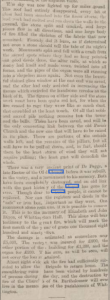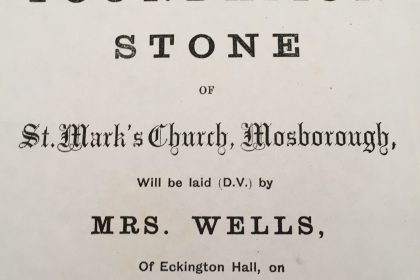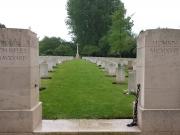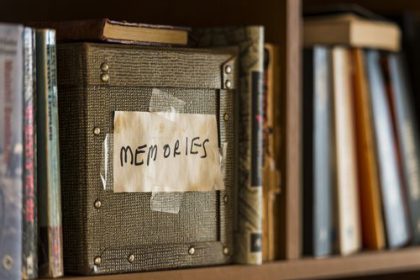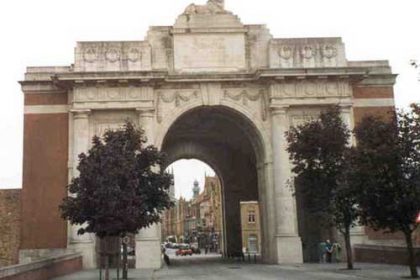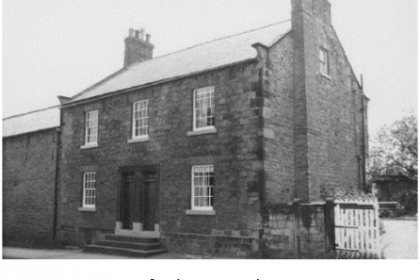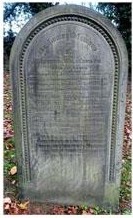A FIREMAN INJURED AND ANCIENT DOCUMENTS / REGISTERS DESTROYED. – £5000 DAMAGE.
This morning a conflagration, which resulted in tremendous damage, occurred at Old Whittington. The outbreak occurred at the Parish Church, which is situated right on the top of the hill at the rear of the Revolution House. The cause is not very clear and in fact will never be known exactly, but it is surmised, and in all probability correctly, considering the spot in the Church where the flames were fiercest that the overheating of a flue scorched the vestry floor, and this, being very dry, ignited. Everything was safe, however, when the church was left for the night. There was no smell of anything scorching: not the slightest indication that the sacred edifice was so soon to be a mass of ruins.
The man who attended to the heating apparatus had made a good fire.
This is the custom, as most people know, during the frosty weather. If the water is not kept flowing round or if any part of the water should get frozen in the pipes, they would burst. To save this expense and inconvenience during winter, the apparatus is utilised continually, and fires have to be night and day. It was about five o clock when the fire was made up and the church locked, and, as we state, there was not the slightest cause for suspicion. But even later than this the church was visited. About half-past five the Rector (the Rev. J. Tomlinson) and his curate were in the vestry, and on leaving saw the church safely locked up for the night. Not the least ground for alarm existed. The vestry was warm but not over hot. I did not at that time even smell as if the woodwork anywhere was scorching, let alone firing.
Still without doubt, the flue was at that time preparing the vestry floor for ignition. During the evening of Monday scores passed and repassed the fane. It was in darkness, and no sign of fire was noticeable. This, however, was quite possible, even if the floor had caught, because the vestry lay the further end of the churchyard, on the north side the handsome east window. Between nine and ten the Rector and some members of his family came home to the Rectory and passed close to the church, but not even late as that was there anything to arouse suspicion. Police-constable Taylor, who stationed Old Whittington, was within 200 yards of the church at 11.30. At this short distance there was light visible and continued on his beat. It was about half past one on Tuesday morning when he was his patrol in Broomhill Park, he saw unusual light in the direction of the church. Having his suspicion aroused, he made his way to the top of the hill and he could then distinguish that some building was flames at or near the church. The fire had then got good hold of the whole of the interior, the glass in the windows was flying all directions, and the tongues of fire shot upwards. The constable raised the alarm, and directly afterwards about twenty minutes to two.
Inspector Allcock from Whittington Moor, who was on his way meet the constables, arrived the scene. The seats, organ, and everything of inflammable nature were then in blaze. It should be said, however, just before this a tremendous explosion alarmed the neighbours with a loud report. It was just as if cannon had been let off. It could be easily heard mile away, and it shook the church from end to end. It is not quite clear what caused this. It was at first believed that the boiler had been exploded. However, this was not so. Some part the apparatus, perhaps, burst and caused the noise, but another suggestion that the gas had escaped. Snow covered all the lands and buildings in the neighbourhood. It was a clear, winter night. Everything was quiet and still. But the whole was lighted with bonfire, composed of the old Parish Church. Flames show some distance through the windows, slates cracked and rolled to the ground and allowed the blaze to come through in all directions, and while the earth was wrapped its mantle snow and ice, the sacred edifice was completely wreathed in fire. It was awe inspiring, but superbly grand. Ten will not describe the feelings of the onlookers. Absolutely unable to save any part of the interior, knowing that the registers and deeds were all being demolished, that the lovely reredos put so recently “To the memory of Catherine Aldam” was crumbling before the terrible master, that the organ which had rendered so many services of praise beautiful these and all the monuments the walls were being destroyed, it was something that produced solemnity almost amounting to terror the hearts of those who could only watch and wait for the work of demolition to be completed.
What could be was done; no stone was left unturned. But the alarm came too late. A hunt was made for the hydrants, and after a search amongst the snow these were found. Ice-bound, however, force had to be used to get the water. On reaching it, it was found totally inadequate supply what was wanted. In the meantime, the Imperial Fire Brigade had been telephoned for from Chesterfield, and about three o’clock the engine and men came up. Foreman Caunt was in charge of the Brigade, and his men immediately set to work. But the flow of water from the hydrants was valueless, so the engine was taken to the pond in the yard of Mr John Bargh, which is close the Churchyard. The churchwardens, Dr Palmer and Mr Holford, were also present, but after were convinced the fire had obtained too strong a hold to extinguished. The new pews were burning fiercely, the pitch pine roof was blazing away, and the organ was this time reduced to a heap of ashes. Foreman Caunt endeavoured to enter but was driven back, and a falling stone struck on the back and slightly injured him.
The Brigade devoted their attention to the tower, playing on it continuously, and the safe in the vestry, which held all the registers; deeds and other documents connected with the Parish and the Church. But it was not fire-proof, and when subsequently found in the debris and opened, containing only a charred and burnt mass, hardly a piece remaining of the slightest value.
The sky was now lighted up for miles around, the roof had entirely disappeared, every bit of glass had been smashed into the finest atoms, the lead had melted and run down the walls to the ground the stone split and cracked, and large pieces flew in all directions, and one large body of fire filled the skeleton of the fabric that now remained. Fiercely did it burn, if determined not even a stone should tell the tale of its night’s work. Monuments split and fell with a crash from the sacred spots where they had so long pointed out good deeds done, the altar rails, at which so many had knelt and made vows, twisted into all forras, and the pipes of the organ were all running into a shapeless mass again.
Not even the beautiful stained-glass window at east end was saved and the altar had only assisted in increasing the flames which encircled the handsome reredos at the back of it. The figures on either side and the stonework must have been quite red hot, for when the fire ceased to rage, they were like so much dust, that crumbled at the least touch.
Of all that noble and sacred pile nothing remains but the tower and the bells. These have been saved and will be the only connecting link between the old Parish Church and the new one that will have be raised in its place. There are portions of the outside walls left, and the of the pillars, but all will have to pulled down, and in fact, should there be the least storm of wind they will not require pulling; least gust will demolish the whole.
There was a very ancient print of Dr Pegge, a late Rector of the old Church, before it was rebuilt, in the vestry, and a monument to his memory. Both have been completely destroyed, and an old link with the past history the church has gone for ever. Though dear to Church people, it cannot be replaced. Nor can the registers and deeds in the “safe” or iron box, important as they were. One monument alone remains, if it possible to remove it. This is to the memory of Elizabeth and John Dixon, of Whittington Hall.
This alone will bear testimony to the great fire, which will mark the first month of the year of grace one thousand eight hundred and ninety-five.
The damage is estimated at somewhere near £5,000. The vestry was insured for £900, the other portion of the building; for £1,200, and the organ for £200. This sum, as will be seen, will not cover the loss sub stained. About eight o’clock the fire had sufficiently subsided to allow the Brigade to return home. The smouldering ruins have been visited by hundreds of persons during day, and the destruction by fire of the Church of St. Bartholomew will ever live the memories of the parishioners of Whittington.
(By Our Own Representatives.) BNA copywrite – The Derbyshire Times Wednesday January 30 1895.

